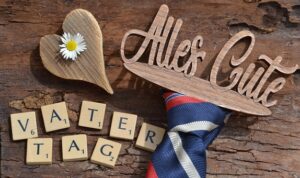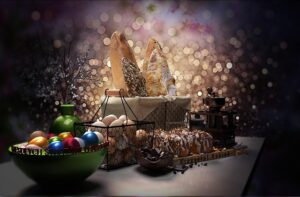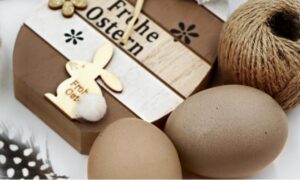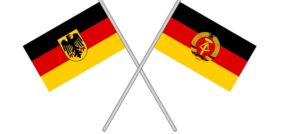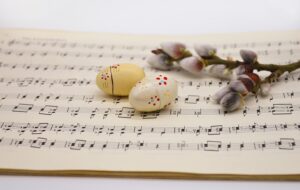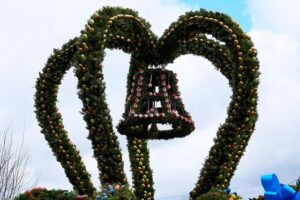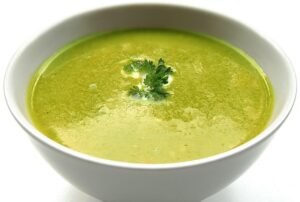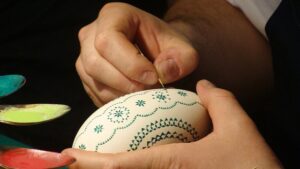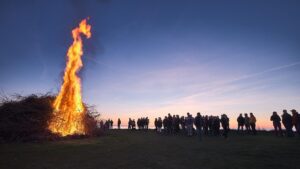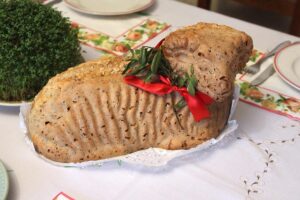When you hear “Father’s Day,” you might think of gifts, backyard barbecues, or breakfast in bed. But Vatertag, or Father’s Day in Germany, is a completely different experience. Imagine men pulling decorated wagons of beer through the countryside, singing songs, and celebrating with their friends - that’s closer to the German reality. Observed on … [Read more...]
Easter Sunday vs. Easter Monday in Germany – Why Two Holidays?
Easter in Germany is not just a one-day event—it extends into Easter Monday (Ostermontag), a public holiday that many countries don’t recognize. While Easter Sunday (Ostersonntag) is the Christian high point of the holiday, marking the resurrection of Jesus, Easter Monday provides an extra day for rest, family gatherings, and regional … [Read more...]
How to Say Happy Easter in German – Common Easter Greetings
Easter is one of the most important holidays in Germany, and just like Christmas or New Year’s, it comes with special greetings and traditions. Whether you’re sending a greeting card, visiting German-speaking family, or simply learning the language, knowing how to say Happy Easter in German adds a cultural touch to your celebrations. While … [Read more...]
Easter in East vs. West Germany: Celebrations During the Cold War
For over 40 years, Germany was divided into two separate states: West Germany (Federal Republic of Germany, FRG) and East Germany (German Democratic Republic, GDR). This division affected almost every aspect of daily life—including how Easter was celebrated. While West Germans enjoyed traditional Christian Easter customs, East Germans faced … [Read more...]
German Easter Songs and Poems: The Music and Poetry of Ostern
Easter in Germany isn’t just about eggs, bunnies, and bonfires—it’s also a time for beautiful songs and poetry that capture the spiritual and festive essence of Ostern. From centuries-old hymns sung in churches to folk songs passed down through generations, music and poetry play a significant role in Easter traditions. For those learning … [Read more...]
Osterbrunnen – The Stunning Easter Fountains of Bavaria and Franconia
Every spring, just in time for Easter, towns and villages across Bavaria and Franconia transform their public fountains into breathtaking works of art. These Easter fountains, known as Osterbrunnen, are adorned with hand-painted eggs, fresh flowers, and evergreen garlands, creating a stunning celebration of spring, renewal, and Easter … [Read more...]
Why Germans Eat Green Food on Maundy Thursday (Gründonnerstag)
Easter in Germany isn’t just about egg hunts and chocolate bunnies—it’s also about food traditions. One of the most intriguing customs is eating green foods on Maundy Thursday, or Gründonnerstag. If you find yourself in Germany during Holy Week, you’ll notice an abundance of green-themed dishes, from spinach soup to herb-filled omelets. But what’s … [Read more...]
German Easter Eggs: The Art of Sorbian & Traditional Hand-Painted Designs
Decorating Easter eggs is one of Germany’s most cherished traditions, blending history, art, and symbolism. Unlike simple dyeing methods used in many parts of the world, Germany is home to some of the most intricate and artistic egg-decorating techniques. The most famous of these comes from the Sorbs, a Slavic minority in Saxony and Brandenburg, … [Read more...]
The Meaning of Osterfeuer: Germany’s Easter Fire Tradition
Easter in Germany isn’t just about painted eggs and chocolate bunnies—it’s also about fire. Every year, communities across Germany gather around towering Osterfeuer (Easter fires), lighting up the night to celebrate renewal and the triumph of light over darkness. These bonfires, often held on Easter Saturday or Easter Sunday, have been part of … [Read more...]
German Easter Foods: Traditional Dishes for Ostern
Easter in Germany is a time for gathering with family, celebrating the arrival of spring, and indulging in delicious food. While many people associate Easter with colorful eggs and the Easter Bunny, the holiday’s culinary traditions are just as significant. Across Germany, Easter menus are filled with dishes that have deep cultural, historical, and … [Read more...]
- 1
- 2
- 3
- …
- 8
- Next Page »
